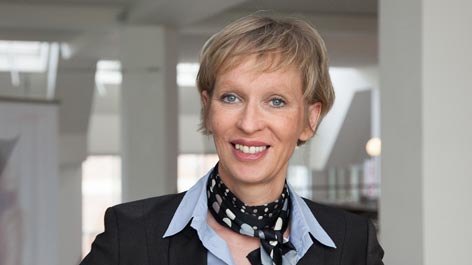“The Digital World Is Always an Extension of the Analog World“
News from 06/01/2017
In museum4punkt0, the Staatliche Museen zu Berlin are seeking to develop digital and personalized content that will help visitors with navigation, provide them with contextual information, and offer opportunities for interaction. Christina Haak, SMB Deputy Director-General, discusses the challenges of the project.

What are your expectations of museum4punkt0?
Everyone involved is expecting great things from the project. That goes for me, too. Still, we have to be clear that this is a pilot project – in other words, an attempt to create something new. Our goal is to find the best way of meeting the challenges and opportunities of digital transformation. It’s a process of exploration, and it’s okay to experiment. The Staatliche Museen zu Berlin (National Museums in Berlin) already have a good foundation when it comes to digital content. But, like other organizations involved in the project, we too will benefit from being part of this network and from the regular exchange and communication that it offers. We’ll be able to profit from experience gathered in other projects, both when that experience is positive and when it’s less successful. I’m confident that by the end of the project, we’ll have a tool kit that we – and other museums that aren’t directly involved in the project – can use to create a new type of museum, a museum 4.0.
From your current perspective, how do museums and their visitors benefit from digital media and digitization?
The digital world is always built on analog foundations. In museums, for example, we are concerned with making objects and content globally accessible so that everyone – regardless of why they are interested and, as far as possible, regardless of where they are from – can use that content: from researchers to members of the public, from people already familiar with the objects to those for whom a trip to see the original appears virtually impossible. But access to museums is an issue. In the case of art museums especially, many potential visitors still feel the barriers to visiting them are relatively high. Digital media allow objects to speak to visitors in an altogether different way, and ideally they will be able to reach new sections of the public, people who are not already attuned to the art world.
What does digitization mean for your research work?
Aside from global accessibility and knowledge networking, one of the major opportunities I see is that the knowledge we gain from digitized objects can help us to understand the artifacts themselves. How were they made? How do we deal with missing parts and, if we want to reconstruct the objects, how can that be done? 3D digitization is, of course, enormously useful in this regard. But the fact that we are continuing to expand our databases, feeding them the data we gain from our research work, and making that knowledge available to others, is also very valuable. The more we know about our objects, the better we can tell their stories and make them available across the world through digital networks.
Now that the funding has been approved, where do you want to start?
Projects of this magnitude naturally require additional staff. In other words, our first step is to put together a project team and that is what we’re doing now. We will also be analyzing user and reception data to better understand which services and content visitors are already using at the moment and what kind of digital experience they expect from their visit. This evaluation will be an enormous help as we hone the details of the project.
What specific project are you planning?
We want to offer visitors digitally mediated content that will help them navigate the museum, provide them with contextual information, and offer opportunities for personal interaction – all customized to the visitor’s personal preferences and provided as an optional extra to their encounter with the original, physical objects. Here, too, we can build on what we have already accomplished. One project that we’ve been working on since last year (with support from the Board of the SPK) is an app for the upcoming exhibition, Beyond Compare: Art from Africa at the Bode Museum. And, of course, we want to use the knowledge and experience gained in this project and apply it, in combination with the findings from our user studies, to other collections as well.
The interview was conducted by Katharina Fendius and Julia Lerche.
Links for Additional Information
- Press Release (in German) “'museum4punkt0' startet: Ideenlabor für digitale Anwendungen in deutschen Museen“ (08.05.2017)
- Press Release (in German) “'museum4punkt0': Teilprojekt XD – xplore Digital“ (08.05.2017)
- Staatliche Museen zu Berlin
- @museum4punkt0 on Twitter

